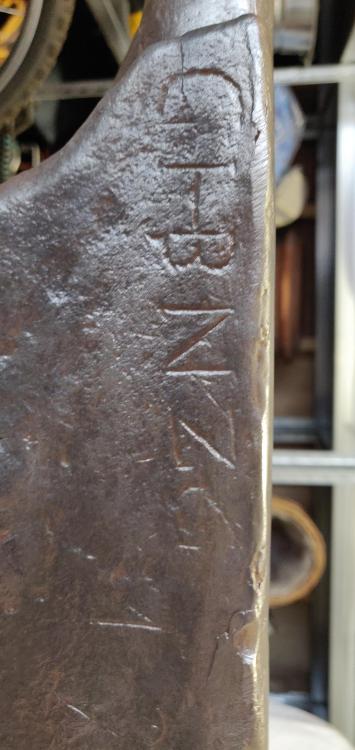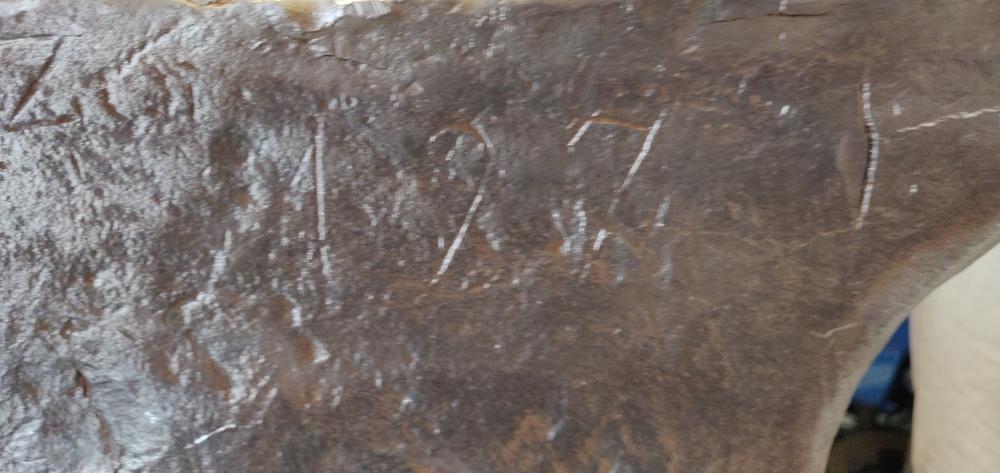-
Posts
521 -
Joined
-
Last visited
Content Type
Profiles
Forums
Articles
Gallery
Downloads
Events
Posts posted by Jobtiel1
-
-
Glenn, this doesn't seem like too much of a problem, and doing this often will inevitably lead to me being faster and better at it! Thanks for the helps, is it however normal for the clinkers to be quite small? I'm talking about 1 cm diameter max.
-
Glenn, thanks for your reply! I was forging when I got the notification of your post, and I tried to fish out the clinkers once my fire got noticeably duller and colder again. However, I noticed that I was unable to fish out any clinker, even after the forge was completely cooled down, the clinker I could find were all small pieces. Could this be due to the absence of a firepot? Or am I missing something on removing clinker from the fire? As it is now, I'd have to completely break up the fire to remove clinker every ~2 hours.
Anvil, thanks for the tip! I know of Joey, and am a fan of his videos, I've even met him while he was doing a demo 2 months ago. AFAIK he lives roughly 1.5/2 hours drive away from me. I might ask him for help sometime soon.
-
Hi all,
I'm posting this update to help people in the future if they encounter the same problem.
My problem with the small fire was due to dust and clinker/ small bits of coal in the forge. After cleaning out all the dust and starting with fresh coals my fire works as it did again. Thanks for all the replies tho!
Oh, and Anvil, thanks for the help with the fire poker, it works way better than turning the clinker breaker does!
-
JHCC: it did! I have been visiting for 2 years now, and actively looking for blacksmithing tools for the past half year.
Thomaspowers: while I have been lucky with the anvil, the scrapyard is quite small. They fish out any interesting pieces of scrap like the anvil and any pieces of normal stock. But for things like leaf springs or interesting tools, the entire scrap yard "renews" itself daily. While this allows constant new additions, I can't visit often enough.
-
Iron dragon: Thanks for the tip, how can I quickly see if the coal is anthracite?
-
This is my (guesstimate) 60 kg old European church window anvil I saved from a scrapper for 50 euros. The heel with the hardy hole is broken off, but the face is in top condition considering its age. On these old anvils the date of manufacturing was often engraved on the far side where the church window is located. If this date is right the anvil was made in 1778.
I'm glad I stopped by the scrapyard before it was destroyed for good. And its great to be able to work on a literal piece of history.
Currently the anvil is securely mounted to the stump with metal straps (not in the picture).
Job
-
Hi Anvil,
I do not have much experience with the different coal types and how to recognize them, but from seeing pictures I thought that I had anthracite as well. The coal I'm currently using came with the forge, and as soon as the bag is empty I'm going to start using proper blacksmith's coal.
I have a piece of 8 mm round with a point forged on to use as a poker, but I haven't found the right way to use it get to allow air passing through in the same way turning the clinker breaker does.
Thanks for your reply! I hope that with experience and proper coking blacksmith's coal the problem goes away.
-
Hi everyone!
I recently upgraded from my makeshift charcoal forge to an old rivet forge with a foot pedal cranked blower.
Now that I started using coal, I have a problem with the rivet forge, whenever I blow air into the coal, it doesn't seem to warm up unless I crank the clinker breaker, and a lot of the heart of the fire falls down in the ash dump. This wastes a lot of fuel and makes my fire go hollow. But if I don't do this then my metal won't go above a red heat.
Is this a fire management issue? Or is it something related to the forge. I'm guessing that small bits of coal clog up the air hole in the bottom of the forge.
I attached a picture of the forge before I patched it up, and a picture of how I'm using it at the moment.
Any comments or tips are welcome!
Thanks in advance for reading and replying!
Job.
-
2 minutes ago, HojPoj said:
Dont think it'd be the right size for full size axes without a LOT of hammering.
I thought so too, but I think it might be enough for hatchets/camp axes. I'd like to bring my own axes when I go on camp with my scouting group.
I have other HC steel and chunks of mild too for a forge welden one. So if it isn't enough for an axe I can at least make the tools from the hex bar.
Thanks for your reply!
-
Hi,
I am trying to get a hold of some good steel for making top/bottom tools and possibly axes, and have come across 27 mm 42CrMo (4140 in USA) hex bars.
Would you recommend forging from hex bar as a novice smith (been at it for about half a year now), or should I wait and try to get square or round stock. I can get the Hex bar stock in question for considerably less money than online retailers (no local supplier).
Also, would 27mm hex be thick enough to create top tools and/or axes?
Thanks in advance for your reactions and time.
-
15 minutes ago, Deimos said:
Will it bend if you put a pipe over the bolthead? then the force is pretty much concentrated on the bolt. And the idea behind my solution was more to put constant force on the bolt while it sat overnight, not brute forcing it out.
Applying constant force makes much more sense, thanks! I will have a look soon if I can fit the leg vise in the bench vise. The other idea makes sense too, I will try it if it takes me too much time. Bedankt voor de info! Komt zeker goed van pas!
-
37 minutes ago, Deimos said:
Does this make it better?
Yes, I understand what you mean, unfortunately I do but trust my current vise enough to even hold it without possibly falling of the workbench, and even then I think it is too small to apply enough pressure. I will keep the idea in mind though as I know some people who do have a vise that can be used to do this. Thanks!
-
11 minutes ago, ThomasPowers said:
Got access to a hammer drill? Just letting it vibrate the bolt can help get the oil to penetrate.
Hi, I do, at least one of those stone drills which I assume is the kind of drill you are talking about. I haven't thought of this, thanks! After dinner I'm doing another spray of oil so I will do this together with a couple of hammer hits from now on.
2 minutes ago, Deimos said:Since you got the nut off, why not place into the vice, fill out the head of the bolt so it can move and start applying pressure on it?
I have difficulty imagining what you mean by this. Are you saying I should put the bolt in the little vise and use the whole legvise as a lever to apply more pressure? If yes, I can confidently say that more pressure will nog get the bolt loose, as I've tried applying a lot with the use of a lever already. If you meant something else would you be able to elaborate? Thanks for the reply!
-
Thanks for the heads-up, I have been doing this the first two days, mostly WD-40 with rust remover. but since I've stopped doing it I will continue with penetrating oil (not WD-40) now. thanks!
-
Damaging the bolt is not a problem, as I deformed the thread to a point where I can no longer re-use it. so applying heat is the next step if oil alone wont work. Its funny that you mention the car jack as I have tried this, only the vise was stronger than the car jack was, so I had to give that up before completely wrecking the jack. thanks for your advie as I suspect when the pivot bolt finally comes loose the jaws might still need some work before moving too. But man its going to be so satisfying when it is back in working order.
-
Thanks for the tips! I have thought about using heat. However, I dont have a handheld burner at the moment, and the makeshift forge I currently use is not really suitable to heat this big a piece. I think I will try using ATF/aceton mix, as I still have some aceton somewhere. I'd rather use the less expensive options first before buying a burner to heat up the bolt.
-
I have been doing this for 3 days now. Since I'm new to this I guess I should continue on a little longer. Thank you for the reply!
Job
-
Hello everyone, I just signed up to ask this question.
I am restoring my great-great-grandfathers Leg vise, but the pivot bolt is completely rusted shut. I managed to get the nut off, but after repeated applying of WD-40, Penetrating oil, rust removal solution, and hammer blows on both the bolt and nut side, as well as the area between the two side plates and the moving jaw, the bolt just wont budge. the jaw won't budge either.
Do you have any tips for me to get this bolt out? the thread is already slightly mushroomed so I need a new one anyway, so destructive methods are not a problem.
see the picture attached for the vise. the bolt I'm talking about is in the top right corner.
The vise has been outside in the garden for 20 something years, and the thread is in good enough shape to still be able to restore.
Thanks in advance for your replies,
Job


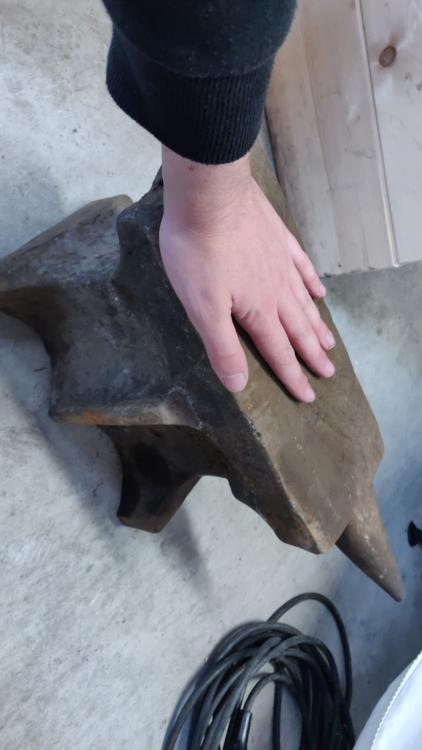
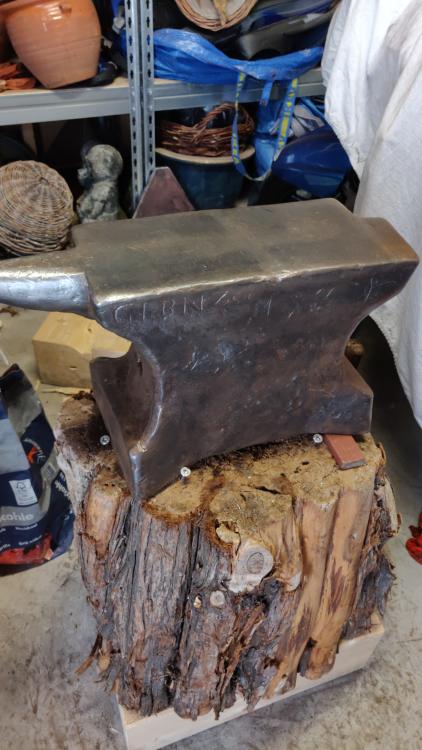
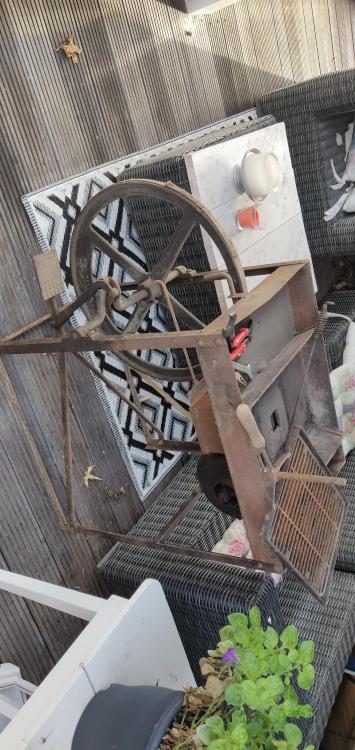
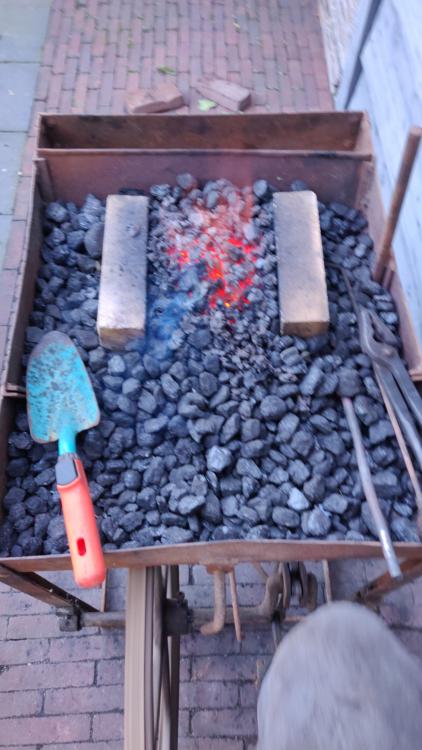
.thumb.jpg.98b977042bf42227ac4000071cdf46fb.jpg)
Show me your anvil
in Anvils, Swage Blocks, and Mandrels
Posted
I managed to take some pictures of the engravings on the anvil today for anyone interested. I have asked around and no one seems to know what they mean, except for the 1778 of course.